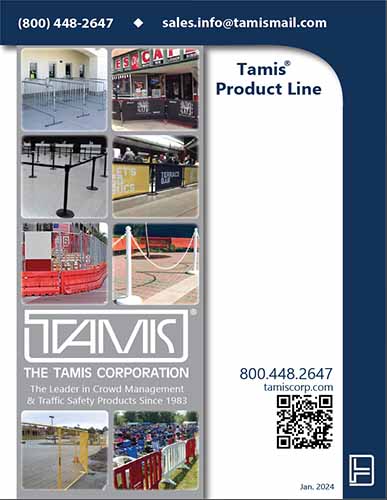Optical Turnstiles/Pedestrian Security Lanes
Last updated Thursday, May 26th, 2022
Introduction
Optical turnstiles (also sometimes referred to as “pedestrian security lanes”) use card-access systems and/or sensors to detect and count people walking through the lane. They are an efficient and generally more stylish update of the traditional turnstile system, while providing state-of-the art security access control.
Features/Advantages of Optical Turnstiles
–Aesthetic/style: Pedestrian lanes provide a more open and aesthetically pleasing appearance than traditional turnstiles. Because these units do not have turnstile arms, they are visually an open gate to the eyes of patrons. Most are designed to blend in with a site’s décor, and they often feature custom colors or finishes to match the surroundings.
–State of the art technology: Optical turnstiles take full advantage of the latest technology to make entering a site easier for patrons and easier for the site’s security personnel. The process is not nearly as intrusive as it is when traditional turnstiles are present.
–Flexibility: There are many types of optical lanes to fit the differing needs and security concerns of differing sites. Professional office buildings with low or moderate security needs can customize a system that both looks and functions differently from a public venue which may need to restrict access via a physical barrier.
–Fast through-put: Estimates range from 25-45 users per minute, depending upon the type of optical turnstile utilized. The public perception is that lines move much faster through optical lanes than traditional turnstiles.
–Tailgate detection: The sophisticated sensors of pedestrian security lanes can detect when one unauthorized individual is attempting to “tailgate” (enter a premise by closely following an authorized entrant).
–Alarms/audible alerts when unauthorized pass: When an optical turnstile detects an intruder or unauthorized individual passing through, and audible (and sometimes visual) alarm will activate.
–Long-term cost savings: Optical lanes can result in long-term cost savings for buildings which employ guards. The lanes allow guards to work on security enforcement, rather than ID verification. One study estimated that one guard with a set of lanes provides the same level of security as three guards checking identification at an entrance.
Where are they commonly used?
Optical pedestrian security lanes are most often used at sites with more modest security needs such as business offices or banks. They are ideal for places where security needs to be less obtrusive and noticeable, and more aesthetic. They are also ideal for sites at which the design and look of security tools needs to blend in with the rest of the site’s surroundings.
Trends show the market increasingly moving to optical turnstiles. They have become the preferred turnstile option for government facilities, courthouses, high-rise buildings at universities, and many other locations.
How do they work?
Optical turnstiles use infrared sensors to monitor and track the passage of individuals. A card reader (or other type of control panel) confirms or denies that an individual is authorized to enter. Most optical security lanes consist of a multiple-beam sensor matrix which collects data about what is passing between the unit’s cabinets. A top-of-the-line system will be able to discern the difference between a second person and suitcases, purses or a swinging umbrella, and not generate a false alarm in the latter cases.
Different Optical Turnstile Options
There are three types of card readers that are commonly found on optical lanes:
An insert reader requires a patron to insert a card into the turnstile and then pull it out (similar to an ATM card). While this method is very familiar to people, the fact that every entrant has to stop and insert a card slows down throughput.
A swipe reader (similar to those used at many retail check out stations) requires patrons to swipe their access card, providing a little faster movement of lines than the insert reader option.
Proximity readers require no physical contact between the card and the sensor, and a person merely has to pass the card in somewhat close proximity to the sensor, resulting in the fastest throughput.
Some optical turnstiles are barrier-free, while some do feature a physical barrier. Barrier-free pedestrian security lanes maximize throughput. However, for sites with higher security needs, there are units which feature barriers (such as dropping or swinging glass panels, angel wings, or arms). For example, a turnstile with swinging glass panels (designed to operate like a high-tech swinging gate) will open when the sensors detect an authorization, but quickly reclose to prevent tailgating.
Summary
An increasingly-popular and state-of-the-art turnstile system, optical security lanes provide needed access control for a wide range of sites and contribute to an aesthetically-pleasing and customer-friendly atmosphere. Delivering fast through-put and potential cost-savings, optical turnstiles meet the need for security, efficiency and style.



